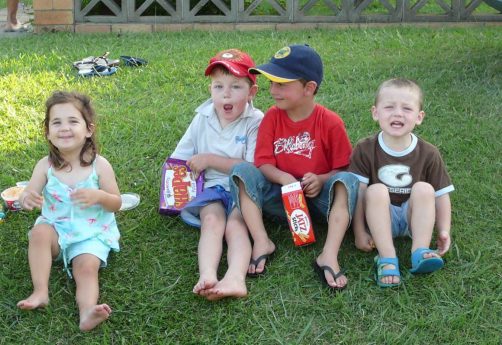
Building relationships – begin by ‘collecting’ children
 The ultimate gift is to make a child feel invited to exist in our presence exactly as he is, to express our delight in his very being – even if he is not measuring up to our values and expectations (Neufeld & Maté 2014). (5 minute read)
The ultimate gift is to make a child feel invited to exist in our presence exactly as he is, to express our delight in his very being – even if he is not measuring up to our values and expectations (Neufeld & Maté 2014). (5 minute read)
Do you see me? Do you hear me? Do I matter?
In each and every interaction, day after day, these are questions we all subconsciously ask. Thich Nhat Hahn beautifully writes that the most precious gift we can give people is our presence. We all want people to care about us, and show us that they value our existence….. But do we show those we interact with, that we are fully engaged in what they are communicating?
Developmental psychologist Gordon Neufeld (Phd) and Gabor Mate (MD), authors of the book “Hold on to Your Kids: Why Parents Need to Matter More Than Peers”, encourage parents to form and maintain a close attachment to their children. They advocate ‘collecting’ a child/teen when greeting them after a physical or emotional separation. The ‘collection’ of the child must take place prior to any interaction, if the interaction is to be successful. They recommend four steps to build and nurture relationships.
Step one is to get in the child’s space in a friendly way. ‘The objective of this first step is to attract the child’s eyes, to evoke a smile, and, if possible, elicit a nod[1].’ So eyes, smile, nod, when your child arrives home after school, from a play date, or some time after an argument. Eyes, smile, nod, is not that easy these days…… particularly with a teenager who barely looks up from their phone to cross a street, let alone enter a house. Eyes, smile, nod, to your spouse who returns from work, grocery shopping, or some other activity. How often does this level of acknowledgement take place?
‘The most common [collection method] is the greeting, which is the prerequisite for all successful interactions….. a greeting should collect the eyes, a smile, and a nod. To ignore this step is a costly mistake…. In some cultures, greeting children is still customary and expected. In our society, we often do not even greet our own child, never mind anyone else’s. As children lose their own initiative to connect with us after times of separation, it may seem less important to us that we reach out to them. Nothing could be farther from the truth. We must compensate with enthusiasm and initiative. Unless we recollect the child, not much will work’ (Neufeld & Maté 2014, p.182)
The next step is to ‘provide something for the child to hold on to: A twinkle in our eye and some warmth in our voice, invites connection that most children will not turn down’. Research has identified many powerful activators of connection, including: attention, interest, emotional warmth, enjoyment, and delight. When we give children signs that they matter, most will want to hold on to the knowledge that they are special to us. This step is an invitation to a relationship and must take place consistently, no matter what attitude or demeaner the teenager is bringing to the table. Every child is different; intuition, trial and error will be your guides.
Step three is to invite dependence. To invite an older child to depend on us is to convey that she can trust us, count on us, lean on us. She can come to us for assistance and expect our help. We are saying to him that we are there for him and that it’s okay for him to need us.
Step four is to act as the child’s compass point..…While we are fairly intuitive with the young, many of us lose this orienting instinct with older children. We no longer assume the role of: a) introducing them to those around them; b) familiarising them with their world; c) informing them of what is going to happen; and d) interpreting what things mean. In short, we fail to act as a guide to those who still depend on us.
Neufeld and Maté (2014) declare that when adults do their job of meeting genuine dependence needs, nature is free to do its job of promoting maturity. Those parents and teachers who encourage their children and students to depend upon them, are more likely to be effective in fostering independence in the end. There is no shortcut to true independence; it is via dependence, then letting nature take its course.
So let’s start collecting our children of every age. The next blog will offer further actions to hone our relationship building skills :-).
‘Teenagers need us to help them get their bearings, although they may not show it. One problem is that peer orientation, surfacing as ‘it’s not cool to look vulnerable’ stops children from looking lost or confused. This is a look which automatically activates our instinct to orient. Those who wear this look, even as adults, can provoke orienting responses even from complete strangers’(Neufeld & Maté 2014, p.190).
Neufeld, G. & Maté, G. 2014, Hold on to Your Kids: Why Parents Need to Matter More Than Peers, Ballantine Books, New York
[1] Research shows that if strangers do not acknowledge us with eye contact, a smile and a nod; we feel less connection to people. http://psychologyofwellbeing.com/201211/the-power-of-a-smile-and-a-nod.html

